- Honda Worldwide Home
- Motor Sports
- EWC
- The History of Invincible Honda
- 1975
Honda Endurance Racing and F.C.C. TSR Honda are participating in the 2016/2017 FIM Endurance World Championship (EWC) series with Honda CBR1000RR bikes. The series stages a total of 6 races, ending with the Suzuka 8hours FIM EWC. The European Endurance Championship series is the predecessor to the FIM EWC series. In the 1970’s, Honda won both the riders and the constructors titles for four consecutive years. The team was so strong, it was known as “the invincible.”
 Developing the RCB in 6 Months to Win
Developing the RCB in 6 Months to Win
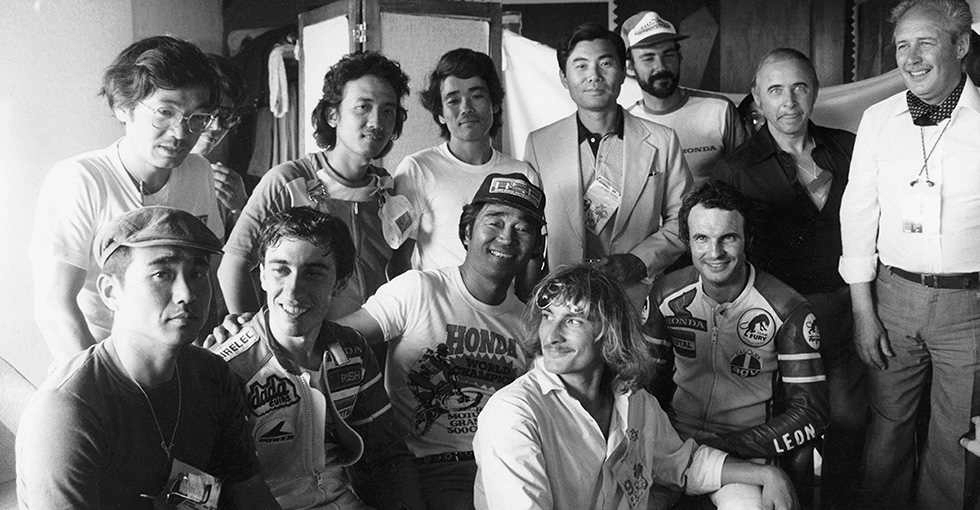
HERT staff with Director Aika (center), Christian Leon (right), Jean-Claude Chemarin (left)
To support its struggling local teams, Honda made the decision to return to international racing. HERT (Honda Endurance Racing Team) was formed in November 1975 with Michihiko Aika as Director. Aika had raced in the WGP in the 60’s, and was an experienced engineer who had been involved in Honda racing activities from an early stage, but he had no experience in endurance racing. He was chosen as a Director at the Senior Managing Directors meeting at Honda headquarters, and was told to “just win” by the vice-president of Honda, Kihachiro Kawashima, Aika recalls he was at a total loss.
Although perplexed with his order, Aika started to build the team and select members, but soon found out that his former WGP team members had spread around the country, and it would be difficult to reassemble all of them. Rethinking the situation, Aika realized that with modern technology and machinery, the experience he and the crew had with WGP might not apply to this project anyway. They were about to challenge something absolutely new, and Aika came to the decision that the team should start from scratch. All the mechanics and designers were chosen from the younger generation who had no experience in racing.
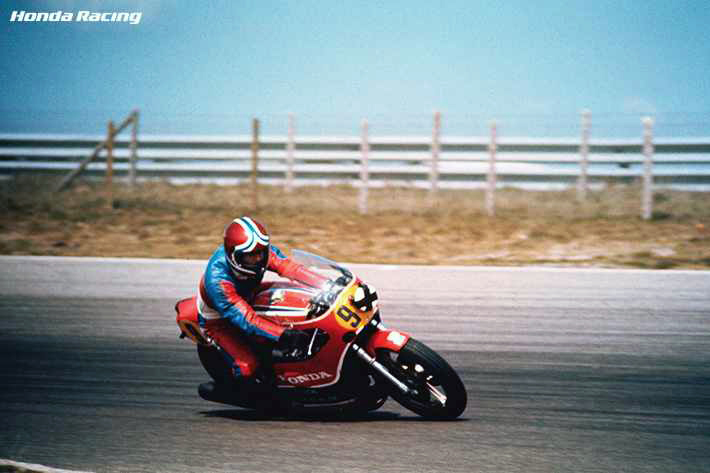
Christian Leon (1976 Zandvoort 600km)
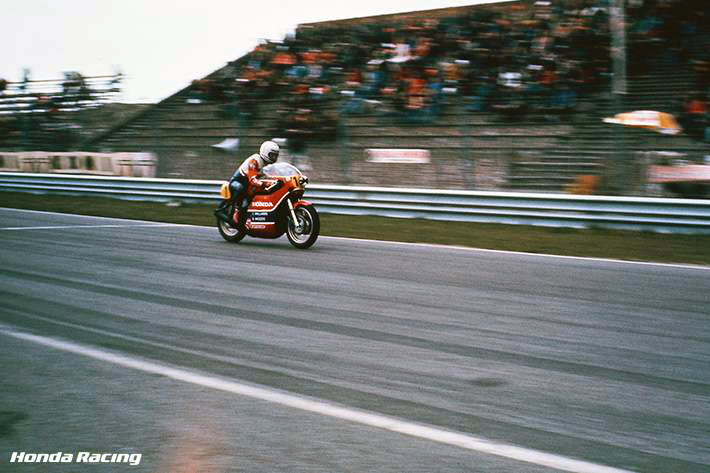
Charlie Willams (1976 Zandvoort 600km)
Staff gathered for the team not only from the main R&D center in Asaka, but from Honda factories all over Japan such as Sayama, Hamamatsu and Suzuka. Among the staff were many who were inexperienced in racing, but there was support from former WGP attendees and from the production section. This was the new start of Honda’s challenge as a factory team after nine years of absence from international racing. Their aim was to win the Bol d’Or 24 hours and to grasp the title of the European Endurance Championship. The first step was to race in the Zandvoort 600km in Holland, April 25. At this stage, there was only 6 months left to design and build the new racing machine.
Early plans included ideas to build a new V-four engine, but due to the lack of time, they decided to develop the engine from the CB750 FOUR. The quickly designed new engine was built almost instantly. It had the same crankcase dimension as the CB750 FOUR, but had a larger engine capacity. By keeping the crankcase the same, it was possible to use existing parts such as shift arms, shift drums and transmission shafts, which contributed to saving time in machine development.
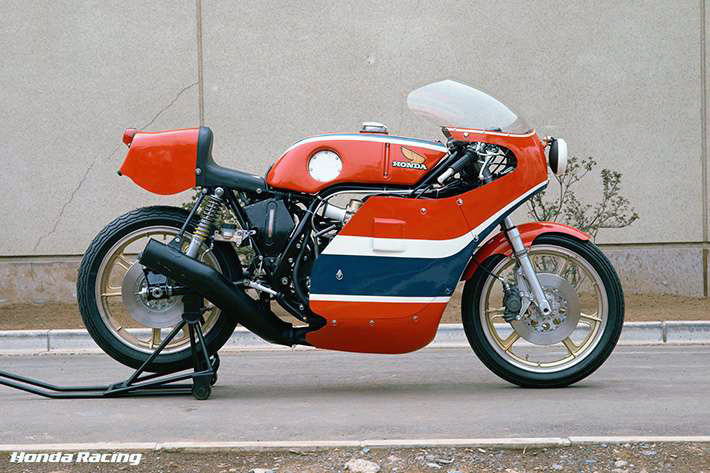
RCB1000(480)(1976)

RCB1000(480)(1976)
The new engine was completely different from the existing CB750 FOUR’s, albeit sharing the same dimensions. While the engine hanger bolts and the placement of the crankshaft were the same, the material and inner-structure were new, and the installation of a DOHC 4 valve head necessitated large modifications above the crankcase. This had an idling gear in between the cam-sprockets, and a chain from the crankshaft drove the gear. This newly adopted mechanism was a “semi-cam-gear-driven,” for it drove the cams by a combination of gears and a chain. With this main modification and several other techniques and ideas, the output of the engine was boosted to 100PS from the original 67PS. The crankshaft was newly made and at its ends, plain metal bushes were used for the first time in a Honda racer, instead of the previously used ball-bearings. The engine durability was set at 5000km without maintenance. This was 1.7 times the distance of the 24 hours endurance race at the time.
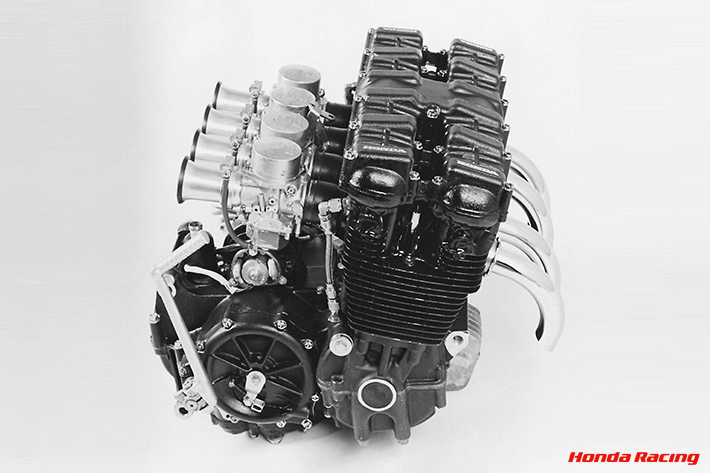
RCB1000 Engine

RCB1000 Engine
Honda was well known in the 1960s for designing exhaust pipes for each cylinder, but the new machine was equipped with a 4-into-1 system for more power. The double-cradle frame was designed by young engineers inspired by RC racer designs. Thanks to information from local affiliates, aftermarket magnesium wheels and disc brakes, rear shock absorbers that were already rated in endurance racing were selected for the new package. This helped to set up a competitive machine in a limited period.
The capacity of the engine had expanded in steps. The original plan was for a 70.0 x 64.8 (bore x stroke) with a displacement of 997cc, but there was concern about the strength of the cylinder block. Not having time to redesign the cylinder block, the first batch was a 915.2cc engine with a bore x stroke of 68.0 x 63.0. The second batch was planned to have a longer stroke at 68.0 x 64.8 and a displacement of 941.3cc, aiming for the Bol d’Or. High power and durability was the main dilemma for the team, but the extremely tight schedule was an added factor. For these reasons, the engine's capacity was increased gradually.
By March 1976, in a very short period of time, the first machine had been made and testing started in Japan, in time for the March 16 announcement to enter the Endurance Championship. In early April the second machine had been sent by air to France for testing. Honda’s first Endurance racer was named the RCB1000 (development code 480). “RCB” stands for “Racing CB.”

